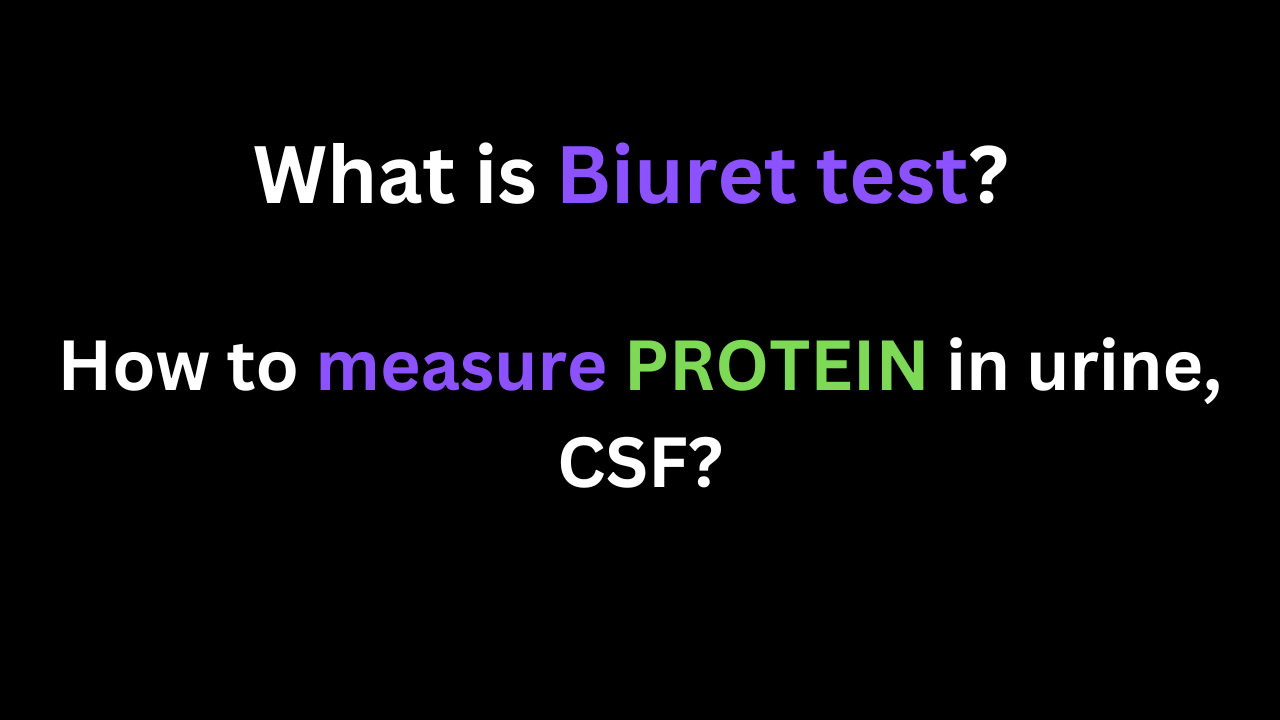The Biuret Test is a chemical test used to detect the presence of proteins in a sample.
It relies on the reaction between copper ions and peptide bonds in the protein, producing a color change that indicates the presence of proteins.
Here’s a step-by-step Biuret test procedure for protein.
- Label three test tubes , “Test”, Positive control, negative control.
- Add 1 to 2 ml of sample in a test tube. Add 1-2 mL of albumin solution in positive control tube, and in the test tube labeled as ‘negative’, dispense 1-2 mL of distilled water.
- Now Add about 1-2 mL of Biuret reagent to the all three tubes.
- Shake well and place them at room temperature.
- After five minutes observe the color.
- If sample contain protein, blue color change into purple color. like positive control.
- In the case of negative result. sample remain blue in color like negative control.
How to prepare biuret reagent
The reagent primarily contains copper(II) sulfate (CuSO₄), sodium hydroxide (NaOH), and sometimes potassium sodium tartrate (Rochelle salt) to stabilize the solution.
Follow these steps for biuret reagent preparation.
- Measure 1.5 grams of Copper(II) sulfate pentahydrate (CuSO₄ · 5H₂O). Dissolve it in about 90 mL of distilled water in a 100 mL volumetric flask (or adjust quantities proportionally if preparing a larger volume).
- Measure 6 grams of Sodium hydroxide (NaOH). Slowly add the NaOH to the copper sulfate solution while stirring continuously. The solution will turn a light blue color.
- Add distilled water to the solution to bring the final volume up to 100 mL (or the intended volume).
- Store the Biuret reagent in a well-labeled glass bottle, away from light and heat.
Safety Precautions
- Wear protective gloves, safety goggles, and a lab coat while handling chemicals.
- Sodium hydroxide is highly caustic; handle with care to avoid contact with skin or eyes.
- Work in a well-ventilated area or under a fume hood.
- Dispose of chemical waste according to local regulations.
